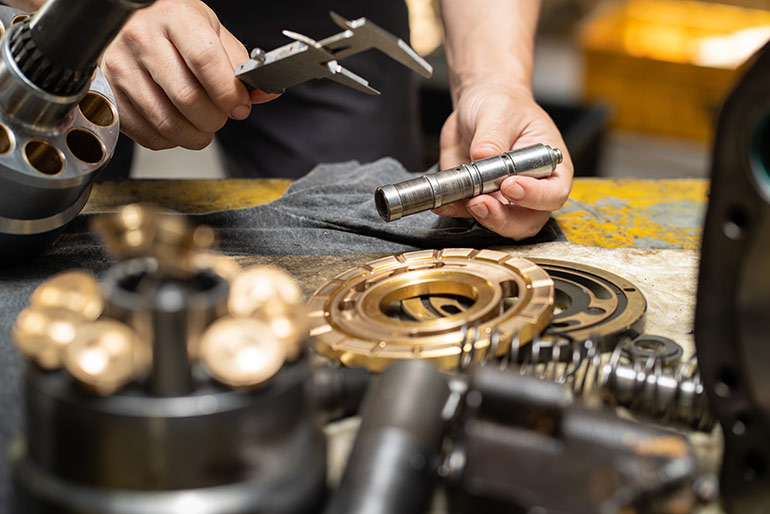By Josh Cosford, Contributing Editor
Hydraulic pumps are a fundamental component in hydraulic machinery and they play a pivotal role in ensuring everything runs with the force and reliability you expect from hydraulics. Over time, though, pumps might show signs of wear and tear, just like any other piece of equipment. And just like most equipment, hydraulic pumps have finite lives. So, ask yourself, how can you determine when it’s time to replace your hydraulic pump?
To begin, think about the performance of your hydraulic system. Has it been lagging lately and struggling to maintain its usual efficiency? Your hydraulic system relies on the pump’s performance to deliver the necessary power to your actuators, so if you notice a significant reduction in actuator force or speed, it’s a possible sign that your hydraulic pump could be nearing the end of its service life.

Next, pay attention to any unusual noises emanating from your hydraulic pump. Unlike the hum of a well-functioning system, peculiar sounds like knocks, grinds, or (excessive) whines can be indicators of internal issues within the pump. These noises often result from components such as bearings or gears experiencing wear and damage, leading to a decline in pump efficiency.
Leakage is another red flag you shouldn’t ignore. Hydraulic pumps should never leak hydraulic fluid externally, so if you find puddles forming beneath the pump or observe fluid dripping from it, it’s a clear indication that the pump requires immediate attention. Leaks are typically a result of compromised seals, gaskets, or other internal components. Also pay attention to the leakage rate of pumps with case drains. Increasing flow from your piston or vane pump’s case may signal increasing wear as pressure forces fluid past ever increasing wear-induced gaps and clearances.
Keep a close eye on the temperature of your hydraulic system as well, as overheating can be a symptom of pump troubles, and any excessive heat can lead to further damage throughout the system. Frequent overheating episodes should prompt an inspection of the pump for any issues that may be contributing to the problem. Just as with the above case drain example, any flow being lost without doing useful work is wasted as heat.
You should also be vigilant about any signs of increased energy consumption within your hydraulic system. A sudden spike in energy usage, even after adjustments, may suggest that your pump is struggling to maintain hydraulic pressure efficiently. A pressure-compensated pump is capable of varying flow to maintain pressure. If the pump is stroking further to maintain flow, you may not see a change in performance yet it may result in higher energy consumption alongside increased heat.
The age and use history of your hydraulic pump matter too, so tracking the installation date of your pumps offers information on predicted life. Older pumps or those that have been subjected to heavy use may be more susceptible to failure. Consider replacing or servicing them preventively to avoid unexpected breakdowns.
Lastly, adhere to the manufacturer’s recommendations regarding pump maintenance and replacement intervals. Manufacturers often provide valuable information on expected pump lifespans and maintenance guidelines.
In the end, staying proactive and addressing any issues promptly can save you from costly breakdowns and system damage. If you’re uncertain about the condition of your hydraulic pump, consult with a qualified hydraulic technician or engineer who can conduct a thorough inspection and provide guidance on whether it’s time for a replacement.
Filed Under: Components Oil Coolers, Engineering Basics, Pumps & Motors, Technologies